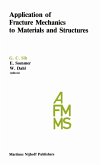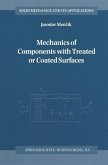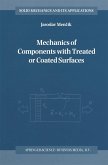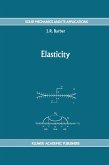Advances in technology are demanding ever-increasing mastery over the materials being used: the challenge is to gain a better understanding of their behaviour, and more particularly of the relations between their microstructure and their macroscopic properties.
This work, of which this is the first volume, aims to provide the means by which this challenge may be met. Starting from the mechanics of deformation, it develops the laws governing macroscopic behaviour - expressed as the constitutive equations - always taking account of the physical phenomena which underlie rheological behaviour. The most recent developments are presented, in particular those concerning
heterogeneous materials such as metallic alloys, polymers and composites. Each chapter is devoted to one of the major classes of material behaviour.
As the subtitles indicate, Volume 1 deals with micro- and macroscopic constitutive behaviour and Volume 2 with damage and fracture mechanics. A third volume will be devoted to exercises and their full solutions complementing the content of these two first volumes.
Most of the chapters end with a set of exercises, to many of which either the full solution or hints on how to obtain this are given; each volume is profusely illustrated with explanatory diagrams and with electron-microscope photographs.
This book, now in its second edition, has been rigorously re-written, updated and modernised for a new generation. The authors improved the existing material, in particular in modifying the organisation, and added new up-to-date content. Understanding the subject matter requires a good knowledge of solid mechanics and materialsscience; the main elements of these fields are given in a set of annexes at the
end of the first volume. The authors also thought it interesting for the readers to give as footnotes some information about the many scientists whose names are attached to theories and formulae and whose memories must be celebrated.
Whilst the present book, as well as Volume 2, is addressed primarily to graduate students, part of it can be used in undergraduate courses; and it is hoped that practising engineers and scientists will find the information it conveys useful. It is the authors' hope also that English-speaking readers will want to learn about the aspects of French
culture, and more particularly of the French school of micromechanics of materials, which this treatment undoubtedly displays.
This work, of which this is the first volume, aims to provide the means by which this challenge may be met. Starting from the mechanics of deformation, it develops the laws governing macroscopic behaviour - expressed as the constitutive equations - always taking account of the physical phenomena which underlie rheological behaviour. The most recent developments are presented, in particular those concerning
heterogeneous materials such as metallic alloys, polymers and composites. Each chapter is devoted to one of the major classes of material behaviour.
As the subtitles indicate, Volume 1 deals with micro- and macroscopic constitutive behaviour and Volume 2 with damage and fracture mechanics. A third volume will be devoted to exercises and their full solutions complementing the content of these two first volumes.
Most of the chapters end with a set of exercises, to many of which either the full solution or hints on how to obtain this are given; each volume is profusely illustrated with explanatory diagrams and with electron-microscope photographs.
This book, now in its second edition, has been rigorously re-written, updated and modernised for a new generation. The authors improved the existing material, in particular in modifying the organisation, and added new up-to-date content. Understanding the subject matter requires a good knowledge of solid mechanics and materialsscience; the main elements of these fields are given in a set of annexes at the
end of the first volume. The authors also thought it interesting for the readers to give as footnotes some information about the many scientists whose names are attached to theories and formulae and whose memories must be celebrated.
Whilst the present book, as well as Volume 2, is addressed primarily to graduate students, part of it can be used in undergraduate courses; and it is hoped that practising engineers and scientists will find the information it conveys useful. It is the authors' hope also that English-speaking readers will want to learn about the aspects of French
culture, and more particularly of the French school of micromechanics of materials, which this treatment undoubtedly displays.
From the reviews:
"This book is the result of a life's work by some notable scientists and, indeed, the amount of information and knowledge the reader can gather here is impressive. This is a stimulating book which should be seen both as a reference tool and as a useful starting point for each topic it touches." (Maurizio Vianello, Mathematical Reviews, March, 2014)
"This book is the result of a life's work by some notable scientists and, indeed, the amount of information and knowledge the reader can gather here is impressive. This is a stimulating book which should be seen both as a reference tool and as a useful starting point for each topic it touches." (Maurizio Vianello, Mathematical Reviews, March, 2014)








